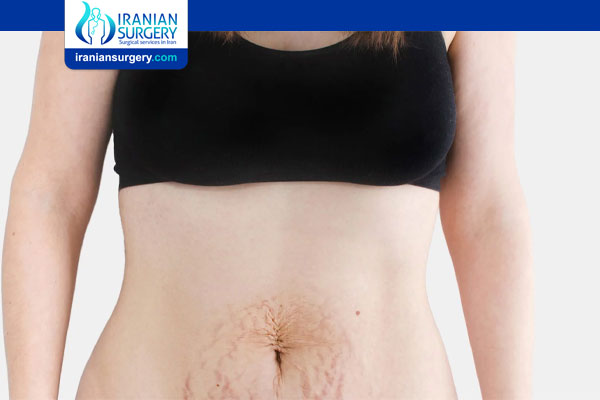Gastrointestinal Problems After Tummy Tuck
Gastrointestinal Problems After Tummy Tuck
A tummy tuck is a cosmetic surgical procedure to improve the appearance of the abdomen. During a tummy tuck — also known as abdominoplasty — excess skin and fat are removed from the abdomen. Connective tissue in the abdomen (fascia) usually is tightened with sutures as well. The remaining skin is then repositioned to create a more toned look. You might choose to have a tummy tuck if you have excess fat or skin around the area of your bellybutton or a weak lower abdominal wall. A tummy tuck can also boost your body image.
Why is Tummy Tuck Done?
There are a number of reasons you might have excess fat, poor elasticity of the skin or weakened connective tissue in your abdomen. These include:
. Significant changes in weight
. Pregnancy
. Abdominal surgery, such as a C-section
. Aging
. Your natural body type
A tummy tuck can remove loose, excess skin and fat, and tighten weak fascia. A tummy tuck can also remove stretch marks and excess skin in the lower abdomen below the bellybutton. However, a tummy tuck won't correct stretch marks outside of this area. If you've previously had a C-section, your plastic surgeon might be able to incorporate your existing C-section scar into your tummy tuck scar.
A tummy tuck can also be done in combination with other body contouring cosmetic procedures, such as breast surgery. If you've had fat removed from your abdomen (liposuction), you may decide to have a tummy tuck because liposuction removes tissue just under the skin and fat but not any excess skin.
A tummy tuck isn't for everyone. Your doctor might caution against a tummy tuck if you:
. Plan to lose a significant amount of weight
. Might consider future pregnancy
. Have a severe chronic condition, such as heart disease or diabetes
. Have a body mass index that's greater than 30
. Are a smoker
. Had a previous abdominal surgery that caused significant scar tissue
Tummy Tuck Risks and Complications
A tummy tuck poses various risks, including:
. Fluid accumulation beneath the skin (seroma). Drainage tubes left in place after surgery can help reduce the risk of excess fluid. Your doctor might also remove fluid after surgery using a needle and syringe.
. Poor wound healing. Sometimes areas along the incision line heal poorly or begin to separate. You might be given antibiotics during and after surgery to prevent an infection.
. Unexpected scarring. The incision scar from a tummy tuck is permanent, but is placed along the easily hidden bikini line. The length and visibility of the scar varies from person to person.
. Tissue damage or death. During a tummy tuck, fatty tissue deep within your skin in the abdominal area might get damaged or die. Smoking increases this risk. Depending on the size of the area, tissue might heal on its own or require a surgical touch-up procedure.
. Changes in skin sensation. During a tummy tuck, the repositioning of your abdominal tissues can affect the nerves in the abdominal area, and infrequently, in the upper thighs. You'll likely feel some reduced sensation or numbness. This usually diminishes in the months after the procedure.
Like any other type of major surgery, a tummy tuck poses a risk of bleeding, infection and an adverse reaction to anesthesia.
Can A Tummy Tuck Cause Stomach Problems?
Stomach cramps are the most common side effect after the tummy tuck procedure. Abdominoplasty or tummy tuck is a cosmetic procedure to remove excess skin and fat from the abdomen or tummy. Below are the common abdominal issues that may occur due to a tummy tuck:
. A patient may have a permanent scar (located in the bikini area) that usually does not fade.
. There may be swelling, which may obscure the actual result until the treated area is healed. This swelling is temporary and may be controlled with bandages and compression garments.
. Pain, swelling, numbness, bruising and soreness are usually common in the stomach area, especially at the incision site. It may be temporary and is usually managed with medications.
. There may be temporary fluid accumulation at the incision site, which is usually drained using small pipes that are attached to the stomach.
. Bulges under the skin of the abdomen are common.
. Extra skin at the edges of the scar (known as “dog ears”) is also seen.
. Incision sites on the stomach may fail to heal leading to infections and complications.
. There may be a collection of blood under the operated skin (hematoma).
. Many patients experience constipation following their tummy tucks. It is usually recommended to drink plenty of water.
. The tight abdominal skin makes it difficult to bend forward.
. Vomiting due to anesthesia reaction.
. There may be an injury to vessels and nerves in the stomach area.
. During a tummy tuck, fatty tissue deep within the skin in the abdominal area might get damaged or die. Depending on the size of the area, tissue might heal on its own or require another procedure.
. A patient may have pregnancy-related complications after the tummy tuck procedure. Hence, it is recommended to plan for this surgery only if a patient has no wish to have further pregnancy.
About Iranian Surgery
Iranian surgery is an online medical tourism platform where you can find the best plastic surgeons in Iran. The price of Tummy Tuck in Iran can vary according to each individual’s case and will be determined by an in-person assessment with the doctor.
For more information about the cost of Tummy Tuck in Iran and to schedule an appointment in advance, you can contact Iranian Surgery consultants via WhatsApp number 0098 901 929 0946. This service is completely free.
Source:
https://www.mayoclinic.org/tests-procedures/tummy-tuck/about/pac-20384892
https://www.medicinenet.com/can_a_tummy_tuck_cause_stomach_issues/article.htm


